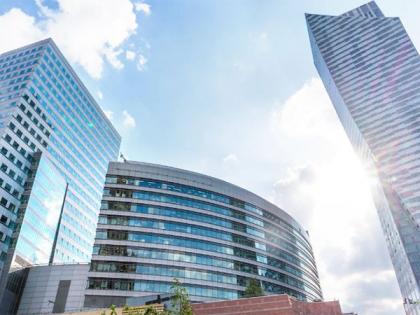GCC expansion and strong domestic demand drive decline in office vacancy rates: CREDAI-CRE Matrix
By ANI | Updated: August 30, 2025 11:10 IST2025-08-30T11:05:17+5:302025-08-30T11:10:09+5:30
New Delhi [India], August 30 : The continued expansion of Global Capability Centres (GCCs), coupled with strong domestic demand, ...

GCC expansion and strong domestic demand drive decline in office vacancy rates: CREDAI-CRE Matrix
New Delhi [India], August 30 : The continued expansion of Global Capability Centres (GCCs), coupled with strong domestic demand, is driving a steady decline in office market vacancy rates, signalling renewed momentum in India's commercial real estate sector, according to the latest report by CREDAI-CRE Matrix.
The 'Office Market Report for Q2 CY'25' highlighted that vacancy rates declined by 210 basis points (BPS) between calendar Year (CY) 2024 and CY'25, underpinned by robust demand of 34.5 million square feet in H1 CY'25 and consistent absorption across major business hubs.
The report added that the ongoing shift towards flexible work models and strong domestic demand are also driving robust absorption rates across Bengaluru, Mumbai Metropolitan Region (MMR), Delhi-NCR, and Hyderabad. The office market absorbed 17.3 million square feet of fresh space during Q2 CY'25.
The office market continued to show resilience in Q2 2025, driven by diversified occupier demand. IT/ITeS led with a 24 per cent share, followed by BFSI (20 per cent) and co-working spaces (19 per cent). Hyderabad emerged as the top co-working destination, accounting for 29 per cent of the segment's demand and is poised to surpass the Mumbai Metropolitan Region in total office stock by the next quarter.
On the supply front, Pune and Hyderabad contributed 54 per cent of total new office supply, while Pune and Bengaluru together made up 40 per cent of total demand. In H1 CY'25, 28.8 million sq ft of new office space was added, with Pune alone accounting for nearly 30 per cent, reflecting a shift towards emerging markets and Tier-2 cities.
Delhi-NCR remained strong, with 4.9 million sq ft demand in H1 and 23 per cent QoQ growth, driven by BFSI, professional services, and healthcare. Despite a high vacancy rate of 20.8 per cent, leasing remained steady in Gurgaon and Noida.
Ahmedabad recorded 0.5 million sq ft demand in H1, with activity moderating slightly. However, the city continues to show long-term promise, backed by a 9.7 million sq ft Grade A pipeline and the rising influence of GIFT City as a BFSI and IT hub, the report added.
Disclaimer: This post has been auto-published from an agency feed without any modifications to the text and has not been reviewed by an editor
Open in app